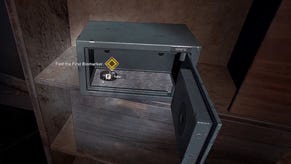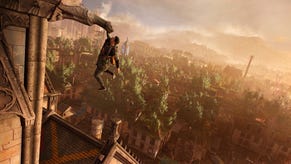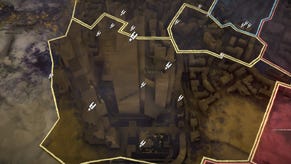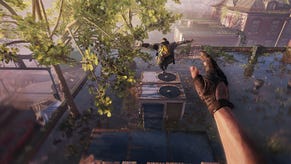Dying Light 2’s practical parkour is a promising compliment to its perfect urban playground
Come to Villedor for a little parkour and recreation
Dying Light 2, like its predecessor, knows that its setting is as much of a sell as its gameplay. The development team at Techland has moved on from Dying Light’s setting of Harran in a nuclear-powered ‘salt the earth’ parting blow, and has shifted focus to Villedor. You play as a stranger, Aiden, travelling to this once-majestic capital to locate his missing sister, and the second you step foot into its guarded walls you’re faced with a city kitbashed together from pieces of Paris, Berlin, Hamburg, Ostrow and other European landmarks. In Villedor proper – a city that’s been designed by actual town planners and urban designers – you see the scope of what Techland is going for. This is a big game, with some big ideas. It’s not just more of the same Dying Light.
That’s immediately noticeable if, contrary to your gaming instinct, you look up. The design team has been hard at work making sure the rooftops are knitted together with all the correct bits of visual language so it’s clear to you how to flow from roof to roof, avoiding the shambling undead underfoot. A reworked parkour system (which feels more fluid, and empowering) underpins a game that favours agility and poise over brute force and aggression.
More than once, I ignored my supposed mission of finding an opera singer’s missing mink scarf, or some guff, in favour of experimenting with my body – flinging myself from rooftops, vaulting through windows, scrambling up the sides of decaying churches. Even in combat, movement feels key: you’re encouraged to dodge, block and dash incessantly, weaving and poking like a prize-fighter to get in close, nut your enemies, and then scamper off with their plunder.
You want to be rhythmic in how you approach traversal; you can’t just hold ‘go’ and expect to climb like in Assassin’s Creed. No, the satisfaction in Dying Light 2 comes from perfectly outmaneuvering a lunging zombie or bandit and lodging a Stanley knife in their ribs, or pegging it from a fight you can’t win with gusto. Improvising a route based on all the visual language you’ve learned from games for the last decade-plus, to hop, skip and jump to safety – it’s action game catnip. Ducking under a broken bit of trellis, sliding under an air vent duct, then free-falling onto a mattress in a relatively safe place? It’s an exhilarating thrill reminiscent of Mirror’s Edge at its best.
But you’re only human (for now), so of course you’re going to fumble the odd climbing hold or miss a step and take a tumble to street level every now and then. Spin around, search for a drainpipe, a window ledge, a street sign – something! – plant your foot on a zombie like a springboard, and you’re back to safety. Phew.
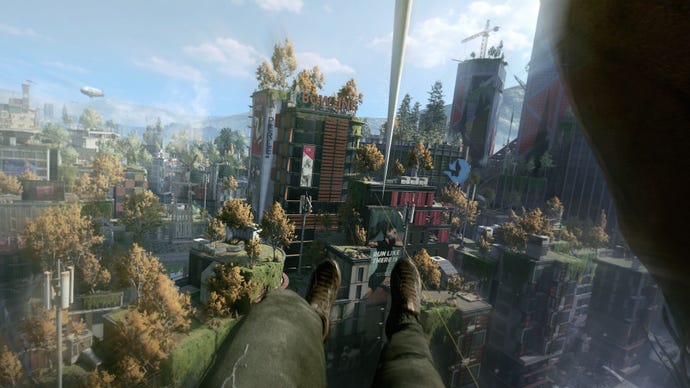
And you’re going to want to know how to avoid and flee encounters, because this game can be brutal. For story reasons, there are very few guns available to the public in this faux-European city (makes sense, when you think about it), so melee weapons and rudimentary ranged weapons like bows and crossbows are the norm. It all plays into what Techland calls its ‘modern Dark Ages’ setting; an era where electricity is scarce, feudalism is returning, and conflict is much more in your face. Good. It makes for a better game that way.
The downside of this is that you’ll often find yourself surrounded by bandits wielding spiky bats, lead pipes or else something sharp and (usually) bloody. When the odds are in your favour – two-to-one, three-to-one – you feel agile and responsive enough to take on all comers. When they’re not, you want to gird your lungs and run. It’s handy that the streets are so pretty, because you’ll be watching a lot of them fly past in your peripherals as you oscillate from street to rooftop, over and over, as you poke at your limits to find out just what, exactly, you’re capable of besting.
Our hands-on focused on two slim chunks of the game, each taken somewhere from the middle of the experience, so it’s hard to comment on the quality of the story. Suffice to say, it all seems fine. It's perfectly functional set-dressing for the game’s two real stars: traversal and city design. If you liked the combat in Dying Light, you’ll love the combat here; it’s leaner, meaner and cleaner, and ends up coming off like Skyrim on steroids. Great sound design helps, because landing a headshot with a lead pipe and feeling a zombie’s skull crack should always feel that brutal.
The real star of the show though (for this recovering Far Cry apologist) was the bow. Towards the end of our demo, we were given a simple recurve bow, and it felt like the game opened up in a hundred different ways at once. Stealth is a far more viable play in Dying Light 2 than its prequel, so hurriedly scurrying out from cover, popping a well-timed headshot at a vanguard bandit, then working the rooftops to pick off their cronies one-by-one like a lunatic Batman is a legitimate tactic. And that’s where the game comes into its own.
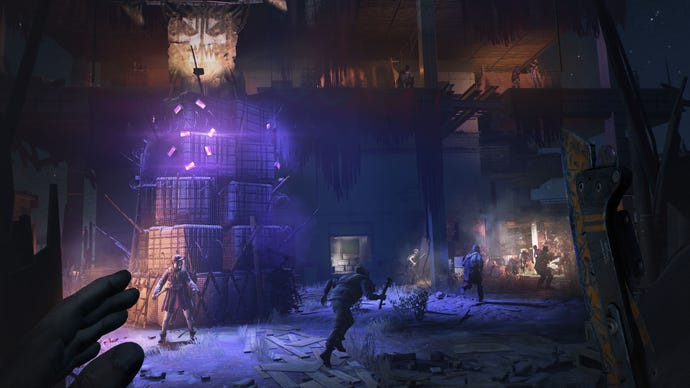
One mission took me into the depths of a subterranean car park, and after a gauntlet of brutal hand-to-hand engagements left me breathless and spent, I felt lethal again. Distracting zombies with bottle caps and bricks (thanks, The Last of Us, for that gimmick) before putting them down with a well-timed arrow complements the fast and furious pace of the exploration perfectly. Having the option to sprint up behind them and smash their brains to the pavement – providing you feel confident about your stamina and your timing – is a welcome solution to problems you create yourself in having bad aim.
You can also pull the bow out mid-fight to thin out the herd a bit if that’s more your style. Or you could even opt to try some magnificent aerial shots as you toss yourself from a window three stories high, if you’re in it for some white-knuckle zombie safari. My hands-on only gave me little tasters of the wider Dying Light 2 smorgasbord, but, similarly to the first game,the real joy in this looks set to come from watching all the tiny moving parts interact.
Give me a bow, let me level up my parkour affinity to make the most of my stamina, and send me on some high-stakes risk/reward mission in the dead of night. Let me surreptitiously mosey through a zombie-infested street, steal the military-grade weapons cache they’ve been guarding. Let me mess it up. Let me see hordes of undead swarm the street as I slam my feet on the broken Villedor concrete and risk glances over my shoulder. Let me mis-time my jump, spill face-first into the iron railings and get eaten alive miserably. And then let me do it all again, but better.
Techland has got a real star on its hands with Villedor – we’re talking Fallout 3-level world-building, from what we’ve seen so far – and if it can keep up the momentum and continue to give you reasons to get out in the streets and fight for your life, Dying Light 2 could be something very special indeed.



